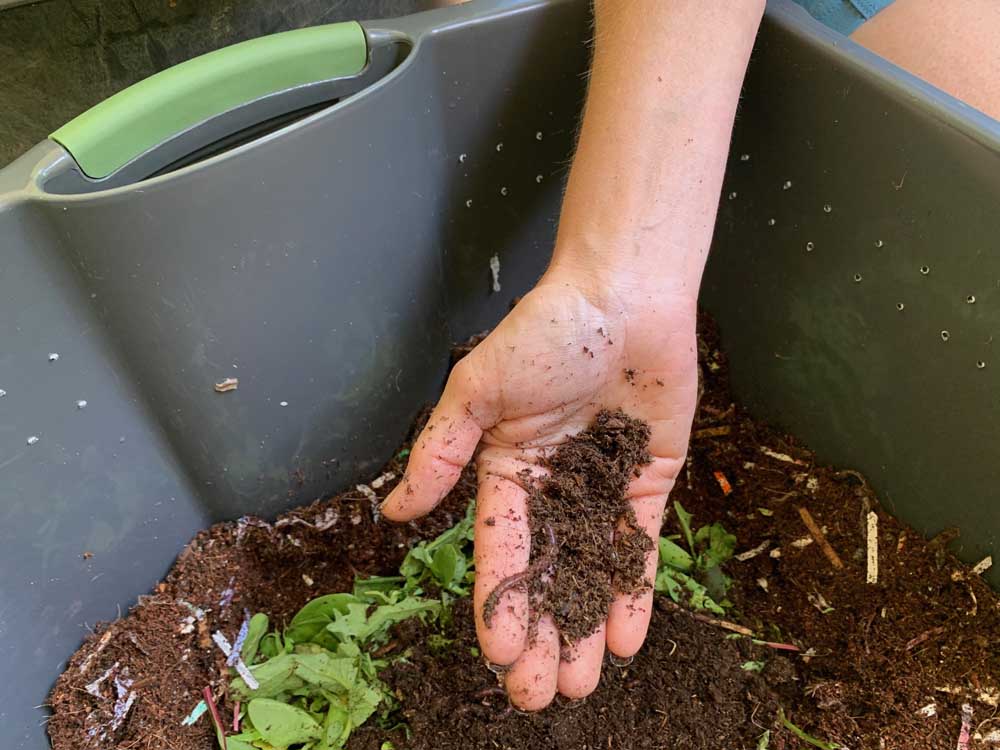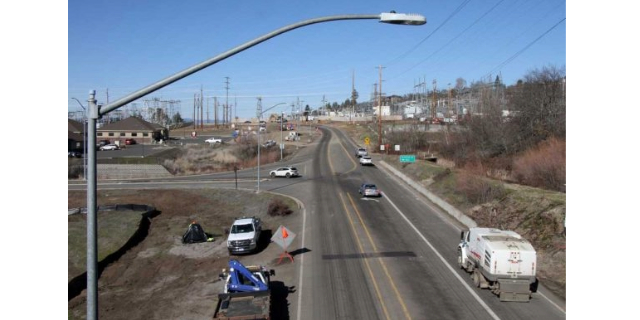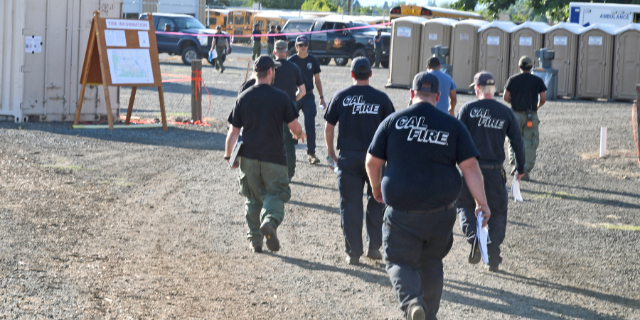GARDEN PLOTS: Knowledge is power — test your garden soil IQ
Published 7:00 am Wednesday, January 31, 2024

- Vermicomposting is the process of keeping worms in a bin to gather their excrement for use as a nutrient-rich soil amendment.
”Soil is the source of life. It’s a symphony, a complex and inspiring relationship between fauna and flora.”
Trending
— Luay Ghafari, “Seed to Table: A Seasonal Guide to Growing, Cooking and Preserving Food at Home,” 2023
As any comprehensive treatise on gardening will do, “Seed to Table” includes a chapter on the fundamentals of soil and the importance of soil health for healthy gardens and healthy people. “Feed your soil, and it will feed your soul,” Ghafari tells us.
Consider: The top 5 to 10 inches of soil on Earth, called topsoil, is home to the highest concentration of organic matter and microorganisms. This is where almost all of the biological activity occurs that enables plants to grow. Ghafari says, “We owe our life to soil, specifically topsoil,” and I concur with a fervent “true, dat!”
Trending
But how much do you know about topsoil, that uppermost layer of the Earth’s crust that provides us with the food we need and the flowers our pollinators need to survive? Here are 12 questions to test your soil IQ:
• Macronutrients and micronutrients are the two main categories of soil nutrients that are essential to plants. Macronutrients are needed in larger quantities and micronutrients are needed in much smaller quantities. What are the three most basic macronutrients and from where are they derived?
• What are the three primary macronutrients and why are they important to plants?
• What are the three secondary macronutrients?
• What are the eight micronutrients (also called trace minerals)?
• If you buy a commercial soil amendment, what would the numbers 4-4-4 indicate?
• To support the growth of leafy greens, which would be the most appropriate soil amendment — one labeled 4-1-1 or one labeled 0-9-0? Why?
• What is the difference between potting soil and garden soil?
• What is one of the best sources of organic matter for garden soil? Why?
• What are worm castings and why are they useful for home gardens?
• What is the difference between mulch and compost?
• What are three types of particles that give soil its texture? Which particles are the largest? Smallest?
• How can gardeners avoid disturbing the soil structure in their garden?
Bonus question: How long does it take for an inch of topsoil to form naturally?
Now for the answers:
• The three most basic macronutrients are carbon (C), oxygen (O) and hydrogen (H); they are derived from air and water.
• The three primary macronutrients are nitrogen (N), phosphorous (P) and potassium (K). N supports vegetative leaf growth, P supports flowering and root formation, and K supports overall plant growth by encouraging nutrient flow through plant tissue.
• The three secondary macronutrients are calcium (Ca), sulfur (S) and magnesium (Mg).
• The eight micronutrients, or trace minerals, in soil are iron (Fe), boron (B), chlorine (Cl), manganese (Mn), zinc (Zn), copper (Cu), molybdenum (Mo) and nickel (Ni).
• A soil amendment with the label 4-4-4 would indicate this is an organic amendment with a balanced ratio of NPK.
• Leafy greens would best be supported with a soil amendment labeled 4-1-1 because this amendment is higher in N and lower in PK.
• Potting soil is a growing medium specifically for growing plants in containers and is specifically formulated to reduce compaction. Despite its name, potting soils often do not contain soil; instead, they are typically made from a combination of compost, peat moss or coconut coir, and perlite or vermiculite. Garden soil, on the other hand, is usually composed of a mix of topsoil and compost.
• One of the best sources of organic matter in garden soil is compost because is consists of decomposing organic matter (called humus). It is no coincidence that humus and humans have the same root because of the important connection between healthy soil and healthy people.
• Worm castings are, quite simply, worm poop. Like manure, decomposing worm excretions are a rich source of organic matter for gardens. The process of gathering and utilizing worm castings is called vermiculture or vermicomposting.
• Mulch is a layer of organic material spread on the top of garden soil to feed the soil, retain moisture, regulate soil temperature, and suppress weeds. Compost can be used as mulch; other organic mulching materials include shredded leaves (my favorite), straw, and bark.
• The three types of soil particles that give soil its texture are sand, silt, and clay. A loamy soil has approximately equal parts of sand, silt and clay. Sand particles are largest, silt is next, and clay particles are the smallest.
• The best ways gardeners can avoid disturbing soil structure in their garden are to avoid walking on it and avoid digging in it. Instead, gardeners can use a broadfork or spading fork to aerate the soil.
Answer to bonus question: It can take from 200 years to 1,000 years for nutrient-rich topsoil to form on its own. Monocropping and heavy tilling deplete topsoil faster than it can replenish itself. Development, changing weather patterns, pollution and erosion all contribute to topsoil depletion. The best way gardeners can create topsoil for their gardens is to grow cover crops and allow them to decompose in the soil.
“Seed to Table” has provided an inspirational kickstart for my gardening in 2024 because the book has taken me through the incredibly fascinating journey of preparing the soil in my garden, sowing seeds, growing and harvesting, and then either making delicious, garden-fresh meals or preserving my garden bounty so I can enjoy it later.
Ghafari’s emphasis on eating more seasonal foods is a challenging goal I’ve set for myself this year. His discussion of healthy garden soil offers an effective segue way into my focus on climate-smart gardening in February.









